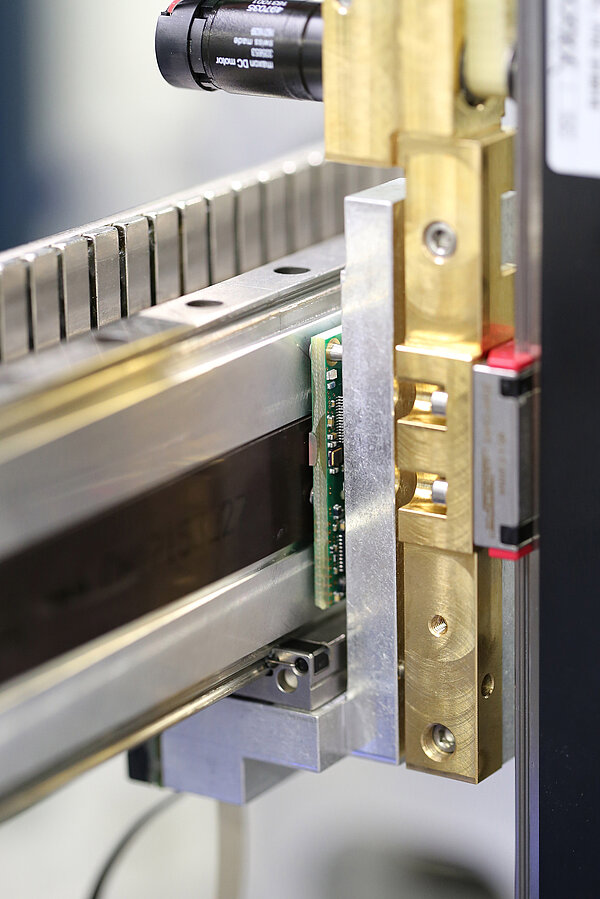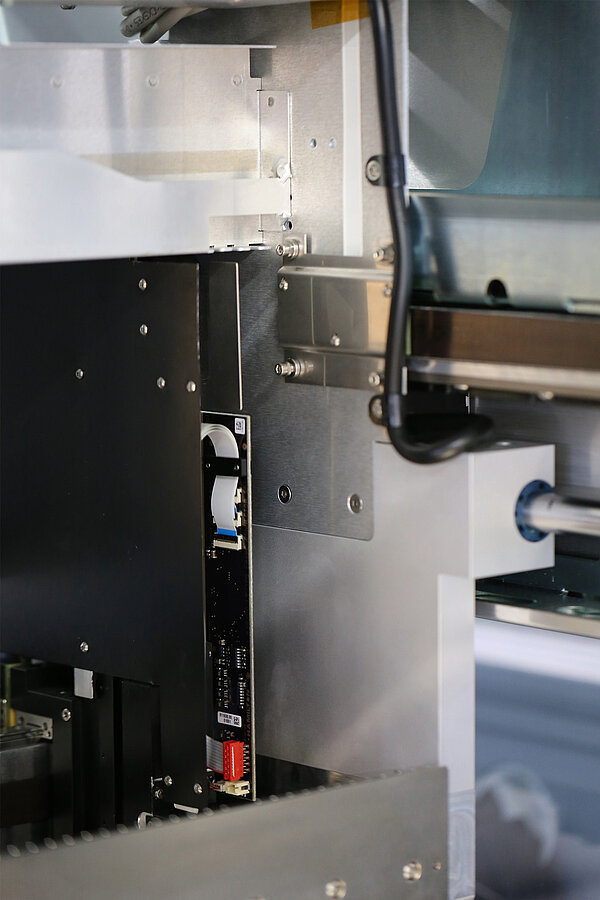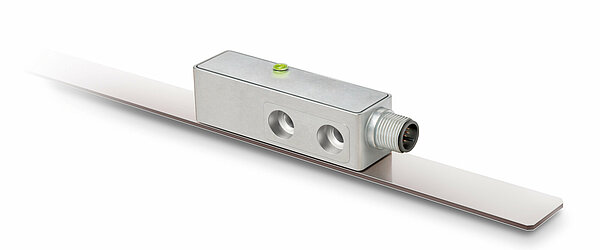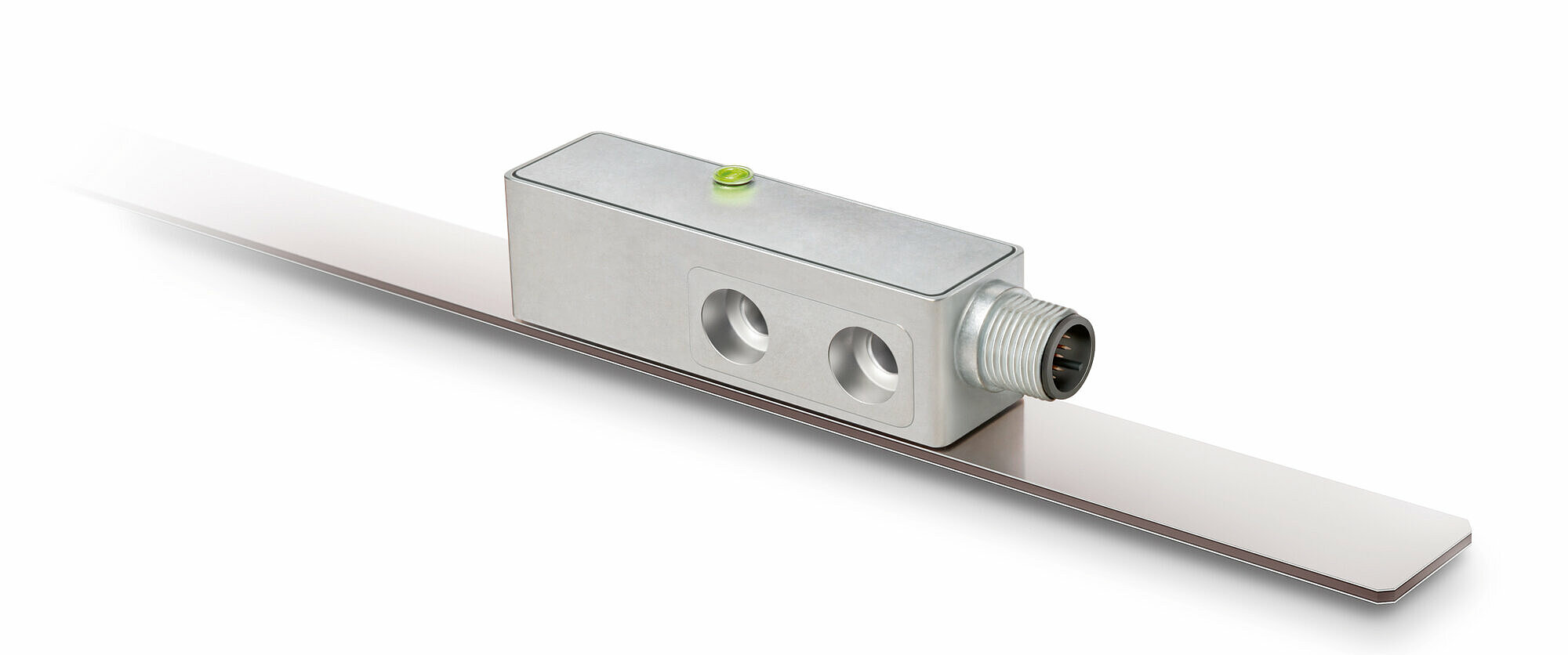Liquid handling system from Hamilton using SIKO magnetic measurement technology
Leveraging laboratory automation, significant time can be saved as well as slashing the rate of analysis defects. Two very relevant aspects from a cost perspective for the client commissioning the laboratory analyses. For example, this emphasizes how such liquid handling systems can be useful when it comes to fully automated processing of liquid samples.
The Hamilton Company has established itself among the top tier of laboratory solution suppliers for applications in biotechnology and pharma and chemical industries. The company hailing from Bonaduz in Switzerland has a new product in the liquid handling sector for accelerated testing and reproducible screening of a range of substances. The "Hamilton VANTAGE Liquid Handling System" pipetting robot system can accommodate samples with a volume of 500 nanoliters accurate to the millimeter with single channels, 96 or 384 multi pipetting heads from a microtitation plate and then transfer them downstream to other units. Since the individual volumes transferred in this case are very low and the number of samples transported at any one time may be considerable, the accuracy requirements imposed when transferring samples are particularly stringent. Ensuring samples are extracted and collected accurately helps guarantee repeatability between individual pipetting steps and ultimately impacts on the success of the entire work assignment.
To determine the position of the pipetting heads along the three spatial dimensions exactly, Hamilton deployed SIKO GmbH magnetic measurement technology in its new pipetting robot. The Black Forest-based SIKO GmbH company produces a wide range of equipment to measure length, angle and speed, which meets all the above analytical technology requirements. To optimize use within the Hamilton VANTAGE Liquid Handling System, SIKO adapted the magnetic bands and sensor boards to meet individual requirements.
Individually configurable pipetting robot
The VANTAGE Liquid Handling System by Hamilton is ideal for laboratory applications of all kinds, including DNA analyses, PCR preparation and cleaning, molecular biological sample preparations, blood analyses, etc. Customers include pharmaceutical companies, as well as representatives from fields of academic research and diagnostics. “We provide our new VANTAGE Liquid Handling System in a modular design, which can be individually configured", explains Martin Rupp, Project Manager in the electronics department of Hamilton Bonaduz AG. The system is available as a 2-meter or 1.3 meter pipetting robot, which can be expanded to include additional labware transport systems, logistics cabins, incubators, sample containers and other elements required for the analyses. Arranging the individual modules vertically facilitates this flexible configuration, which also means devices from other makers can be easily accommodated.
To simplify the process of implementing third party devices as far as possible, firstly a transport robot capable of moving sample vessels within the system or transferring them to other third party devices is used and secondly, the SiLA software standard forms the basis for the system. Assays are controlled by the "INSTINCT V” Hamilton software. This software allows multiple users to work on the system simultaneously and paves the way to perform a range of experiments with the same devices. A drag and drop system means generating and modifying the instrument and layout configurations of experiments couldn’t be easier. A 3D simulation of the sample transfer helps expedite the set-up process. A pipette tip of 10 microliters can accommodate a volume of 1 microliter, for example, to accuracy of within 5.0 percent. These volumes can then be precisely positioned within a 2.25 millimeter grid (1536 well plates) via all channels. Two versions of SIKO measuring technology are used to perform this task. Meanwhile, two magnetic tapes positioned below and at the side are tasked with monitoring the motor control on the pipetting robot. A solution involving magnetic tape and boards helps enhance the accuracy of movement on the longitudinal axis.
Individually adapted magnetic tape solution: Eliminating reference runs
The pipetting system comes equipped with linear motors used to position the individual axes. There are three axes, on which pipetting robots move in all three dimensions: the x-axis in the longitudinal direction, in which the pipetting arm and thus the channels move. The forward and reversing movements of the pipetting channels are performed on the y axis, while height adjustments are implemented via the z axis. Engines control these three axes, which involve the magnetic sensors issuing positional feedback to the control unit and monitoring the engine in the process. The y-axis sensors use SIKO magnetic tapes, since Hamilton developed these sensors in-house. "SIKO responded with great flexibility to what we wanted, since our own magnetic sensors had already been installed on two axes. For this purpose, SIKO supplied the relevant magnetic tapes with special coding", confirms Martin Rupp. This magnetic tape solution is installed on the pipetting arm. The built-in linear motor requires positional information for the movement to be performed. On the one hand, the magnetic tape system handles the task of determining the position of the pipetting arms and on the other, it ensures that the pipetting channels are positioned precisely within this axis.
The channels have to be narrow, to facilitate collision-free work within the confines of the pipetting arm. To meet this requirement, Hamilton arranged the channels on both sides of the pipetting arms. Accordingly, two magnetic tapes were also required, which are respectively installed on the right and left of the pipetting arm. In addition, a further constraint was a maximum width for the pipetting channels of 18 millimeters within this configuration. “There is no magnetic measurement system on the market, which operates based on an 18-millimeter width and which can completely code a length of around 700 millimeters", says Martin Rupp. Although the original magnetic tape solution was technically functional, the supplier reliability was substandard. “For us, it is also important that we always receive goods on time and that they are up to standard, which is why we decided to go for SIKO", confirms the project manager.
One key advantage is the exceptional reliability of the absolute technology used and the fact that the position value remains valid, even after a power outage, without the need for any additional reference run. The absolute coding of magnetic tapes largely eliminates the initialization runs when switching on, which other systems would otherwise require. The drive is immediately operational, without the need for a time-consuming reference run or motor commutation.
Stroke measuring system: Only PCB and magnetic tape
Hamilton deploys a complete SIKO solution for recording positional information of the longitudinal axis: a sensor, incorporating a matching magnetic tape. Similarly, this assignment also involved working within an exceptionally confined area. The original development was a 82.6 by 20 millimeter sensor, but the size meant it was impossible to install. With that in mind, a PCB solution was chosen by Hamilton and SIKO – namely limiting the installation to the PCB of the sensor and its sensor elements directly within the customer housing. Under other circumstances, a purely board-based solution would not be possible, particularly with any risk of soiling or the sensor coming into contact with water. The existing housing of the pipetting robot helps protect it against external influences and was key in enabling the board-based solution. The positive spin-off of this slimmed-down sensor model: cost savings for Hamilton.
This model involves the sensor detecting the movement of the arm as a position sensor. “Precise positioning of channels is contingent on correct positioning of the pipetting arm", states Martin Rupp. "The channels sit on the arm, which, when moving, must be at least as precise as the axis of the channel. This makes it crucial for the arm to position with great accuracy in the x axis." Before the SIKO solution was deployed, a rival product was used, but resulted in restrictions in the working area of the pipetting channels, namely on the y axis. It is a top priority for Hamilton to ensure the channels can also reach the micro titer plates at the edge of the system. The sensor solution previously tried failed to optimally exploit the full working range of the channels. Also under consideration was a product which required less depthwise space and ensured comprehensive working space for the channels. For this purpose, SIKO adapted the MSA501 magnetic sensor. “All this meant we could tap into the wealth of SIKO expertise and, taking advantage of lower development costs, deploy a sensor which maximized the working range; something which was not possible with the previous configuration", says Martin Rupp.
High system accuracy when using SIKO magnetic sensors
Both the complete board-based solution as well as the other configuration combining the customer’s in-house sensor and SIKO magnetic tapes reflect how individually tailored solutions can be decisively deployed for each customer, leaving a precisely functioning measurement system. "The magnetic tapes and sensors are some of the key factors determining the functional scope of the system", said the Project Manager, “without which the pipetting channels and thus the entire pipetting robot would not work." The precision of the measurement system is the specific decisive criterion in this case, which determines the overall quality of the system. The adapted SIKO sensor has a maximum resolution of 10 μm in absolute terms and 2.5 μm incrementally. Repetitive accuracy is ensured to within a 5 μm tolerance. Operating on a contactless working principle eliminates sensor wear as well as minimizing the maintenance required. The initial system precision requirement for the Liquid Handling System from Hamilton was 20 μm, which rival products could not match.
What swayed Hamilton in favor of SIKO when selecting a measurement system was the fact that it includes two in one: both absolute and incremental measurement systems. The absolute system comprises absolutely coded magnetic poles, which can be scanned using a sensor and calculated together with the incremental unit. Using this approach, combined absolute and incremental sets of data are issued. “The competing product only managed to achieve enhanced system precision via the absolute interface. However, the electronics used positions by means of the incremental interface", explains Martin Rupp. Since September 2014, Hamilton systems including SIKO sensors have been available on the market. “We see it as a convincing collaboration. In future, we will exclusively have Hamilton VANTAGE Liquid Handling Systems with SIKO magnetic measurement technology", adds Martin Rupp.
Author: Freelance editor, Ms. Carolin Ordosch
Characters with spaces: ((Characters: Around 11,566))











